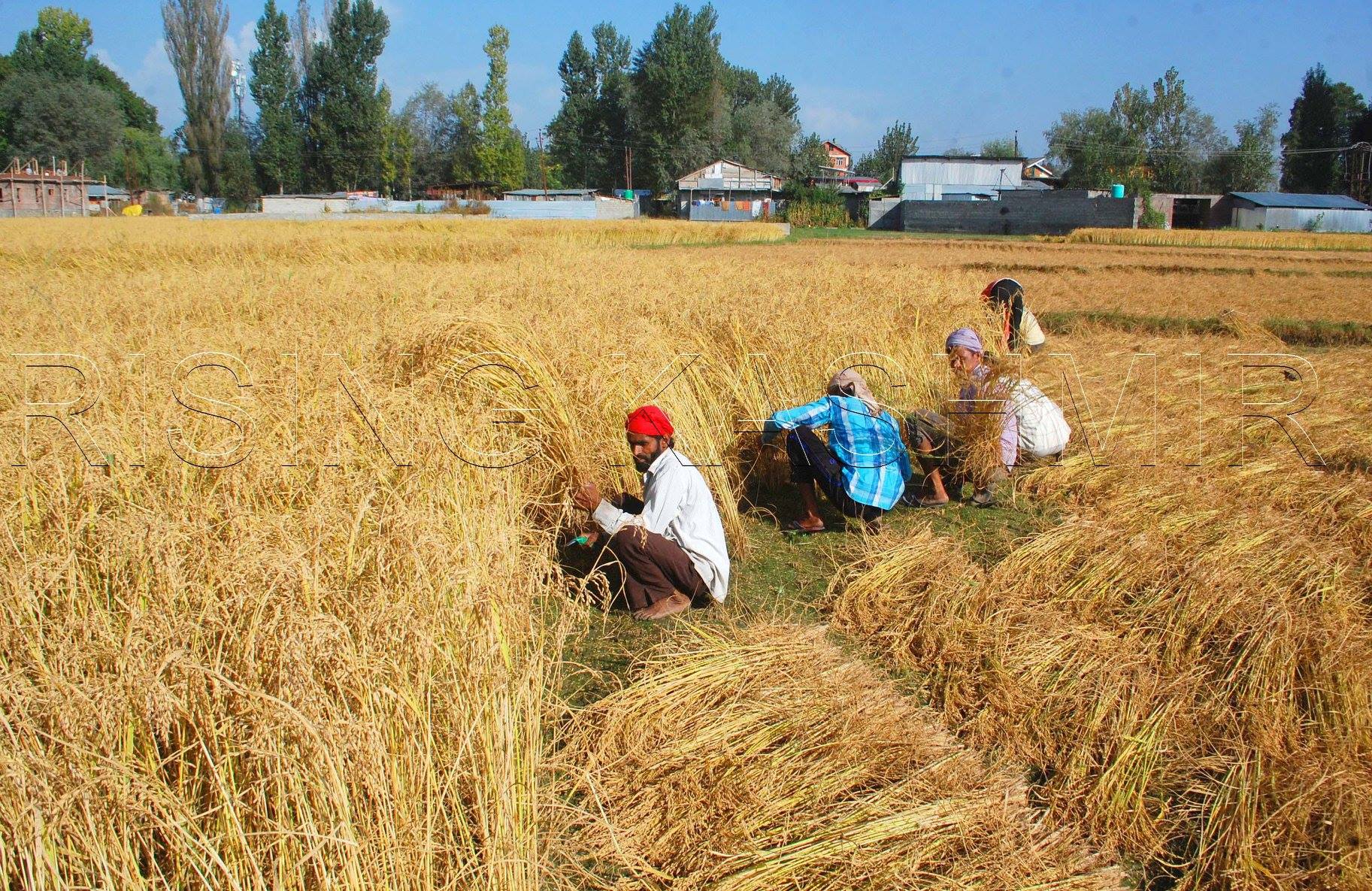Kashmir’s paddy land shrinking, farmers voice concerns
Post by Syeda Rafiyah on Tuesday, January 24, 2023

Srinagar, Jan 23: In Kashmir, the paddy fields that provide food for the people are rapidly on decline and have been replaced by concrete constructions due to population explosion.
With the increase in housing colonies and commercial complexes on agricultural land, farmers say that in future there would be little land left for agriculture activities.
Ghulam Qadir, a farmer from Pattan, Baramulla who owns five kanals of paddy land said there is already less production of rice and Kashmir is dependent on other states for rice.
“If the conversion continues it would have serious repercussions in future. When there is no paddy land where will the future generation get food. It is a big question. The government needs to be more and more vigilant and put checks on the same,” he said.
Waseem Ahmad, another farmer from Budgam, said the people would be in a deficit of food in future and there would be no food security and people would become more dependent.
“Rice is the main food in Kashmir and there are no other crops which are used as daily food. However, the conversion of agricultural lands is occurring throughout Kashmir, which is a source of concern not just for the government but also for communities,” he said.
Director Agriculture Kashmir, Chowdhary Muhammad Iqbal, said in 2021 there was 1,41,000 hectares of paddy under cultivation in Kashmir which will decline to 1,35,000 hectares in 2022.
Notably, as per the officials figures, in 2012, roughly 1,62,309 hectares of land was under paddy cultivation in the valley and it continues to shrink.
“The paddy land has shrunk over the years. The cropping plans of the farmers keep changing. There are many reasons why some people have turned their land into apple orchards and some have also shifted to vegetable farming,” the director said.
He said the paddy being a staple food, the department has taken many measures with which the farmers have been able to get more crop produce in the valley’s paddy fields.
“Earlier, a farmer used to cultivate 25 quintals in one hectares of land and it has increased to 80 quintals per hectares which is a positive development,” he said.
When asked how the department is tackling conversion of agricultural land into construction activities he said, “At present Section 133-A of J&K Land Revenue Act empowers the revenue authorities to check the Land Conversion.”
He said that the legislation banning conversion of agricultural land for non-agriculture purposes is presently with the Select Committee of J&K.
“However, it is a fact that conversion of agricultural lands has taken place because of rapid urbanization and implementation of developmental projects like roads, buildings, educational institutions and shopping complexes etc. Besides, there has been a large-scale shift in cultivation from agriculture crops to horticulture (orchards),” the director said.
Agriculture experts believe that the agricultural land is shrinking at an alarming rate in Kashmir and at places the land has been converted into commercial purposes.
“People are moving towards horticulture. Construction of houses in paddy land is on rise especially in villages and towns. Many people have also turned paddy to vegetable farming. At many places there is shortage of irrigation that is also a reason why the land is declining,” said Tahir Ahmad Tahir, Agriculture Extension Assistant Agriculture Department Kashmir.
The agriculture expert said if the land conversion continues with present pace a time would come there will be very less paddy land for cultivation.
“Another reason is that, if the weather were to remain dry continuously farmers would prefer maize farming which has also already happened at many places,” he said.